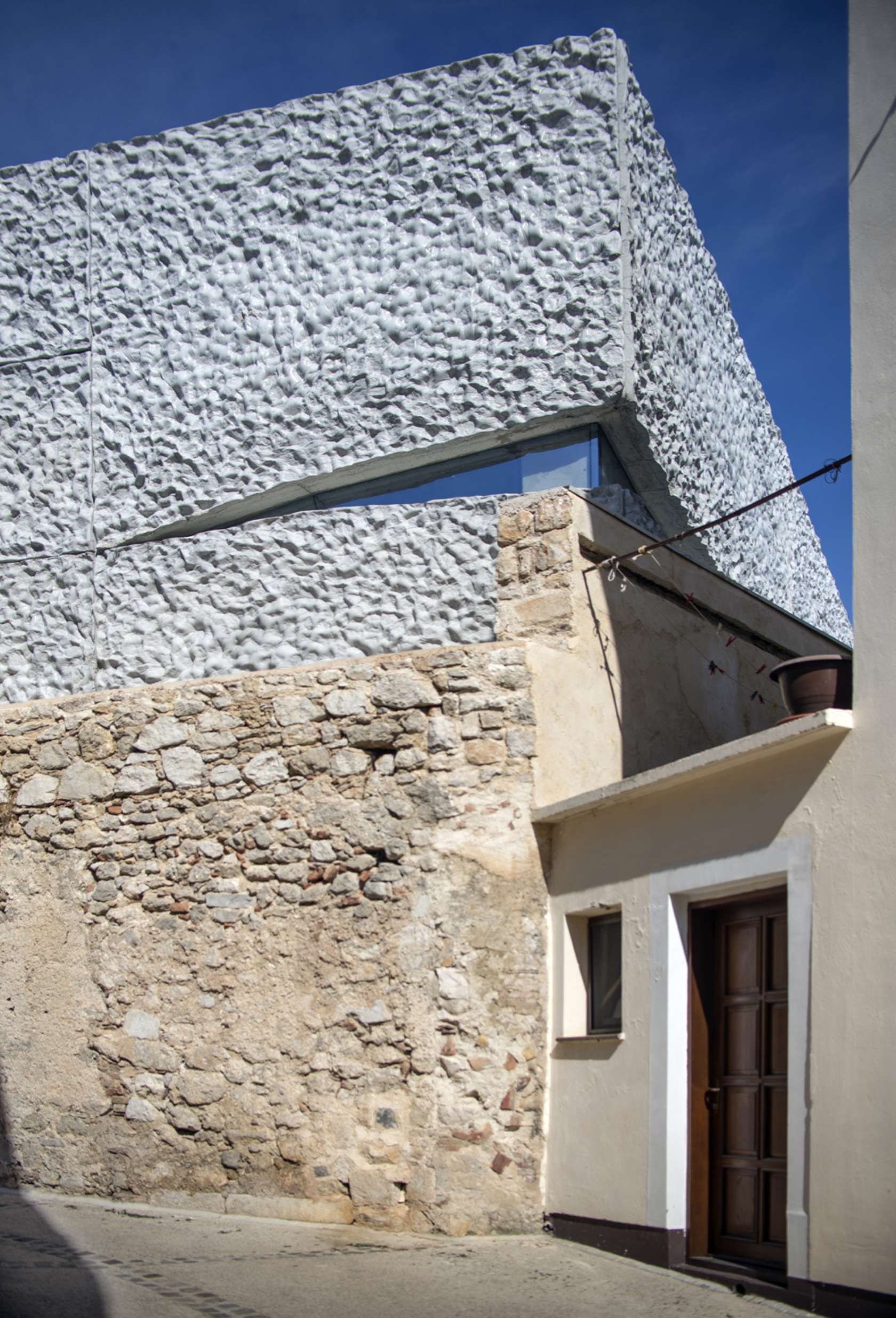Architects: Showcase your projects and find the perfect materials for your next project through Architizer. Manufacturers: To connect with the world’s largest architecture firms, sign up now.
Crushed stone and flint have been used as a building material for centuries and are usually associated with classical architecture and 18th-century revivalism. Flint cobbles were often used in combination with limestone and brick during the Victorian era, mostly in cottages, churches, fortifications and country houses of the flint regions. Although these finely textured façades have been synonymous with historically significant but dated architecture, their tactile qualities are catching the eye of contemporary architects and inspiring buildings that marry traditional craftsmanship with modern forms and techniques.

© James Morris

© James Morris
Flint House by Skene Catling de la Peña, Buckinghamshire, England
This exquisite building by London-based Skene Catling de la Peña is clad in flint sourced from an area south of Norfolk. Located on a large estate in Buckinghamshire, the building was initially built as a residence for the curator of the new archive building. Its raw texture and monolithic form echo its surroundings, bringing a tactile quality that permeates the interior spaces. The building consists of the main volume and an annex, which create a stepped form that seems to grow from the ground. The lowest parts of the exterior façade are clad in dark flint, which gradually lightens towards the top and fades into narrow blocks of white chalk.


Renovation of a Dwelling in Chamoson by Savioz Fabrizzi Architectes, Chamoson, Switzerland
Swiss design studio Savioz Fabrizzi Architectes renovated a rural home originally built in 1814. The building blends into the gorgeous backdrop by mimicking the rocky configuration of the neighboring mountains. The architects preserved the exterior façade and lined the inside with an additional layer of insulation which takes part of the loads and reinforces the original structure. Parts of the façade were replaced with concrete surfaces which mimic the texture of timber. Additional windows were introduced in order to allow more natural light into the interior. The logic of the façade extends into the interior where natural stone, exposed concrete and screed floors create an atmosphere infused with warmth and coziness.


Transformation à Charrat by Clavienrossier Architects, Charrat, Switzerland
Another renovation project, this time by Clavienrossier Architects, is a rural house that was completely renovated to fit a more contemporary lifestyle. The architects replaced the double-sided roof with visible, tinted concrete sitting atop a stone volume. Large openings on the top floor bathe the interior in natural light and act in contrast to the lower part of the house. Stone surfaces are included in the interior dominated by white surfaces and minimalist furniture.


The Water House by Li Xiaodong Atelier, Lijiang, China
Located on a site at the foot of Yulong mountain in Lijiang, China, this building functions as a cluster of interlocking spaces organized around inward-oriented courtyards. The house, designed by Li Xiaodong Atelier, appears to float over a reflective pool and merges steel, timber and stone to create a private environment sheltered from the outside world. Local villagers built most of the structure which sports tile-clad pitched roofs and an abundance of natural materials. The complex is dominated by stone walls, the textural quality of which is augmented by the reflections in the water.


Sports Hall and Square by Turato Architects, Krk, Croatia
Croatian architecture firm Turato Architects designed a new sport facility on the island of Krk, following the success of their previous project Fran Krsto Frankopan elementary school. The new hall, which opened in 2013, is respectful of the island’s architectural heritage and the character of the neighborhood dominated by churches and monasteries. Parts of the church, which was excavated on site, were integrated into the design and referenced by the new structures. Terrazzo was combined with original stone surfaces and prefab concrete elements that have a similar textural quality to crushed stone. The architects named these elements “innards” — unique precast elements produced as a negative of a dry stone wall.


Training Center Předlice by 3+1 architekti, Předlice, Czech Republic
Czech 3+1 architekti transformed a dilapidated farmhouse into a training facility. Built in the second half of the 19th century, the complex was used as an agricultural cooperative during the communist era and was deserted in the 1990s. What was left were massive structures along the perimeter of the property, two of which the architects included in the renovation project. Long side stone walls were used as a natural support due to difficult terrain and were simultaneously a stable and solid façade for the new building which emerges in the form of an industrial-like wooden structure.


Farmstead B by Bergmeisterwolf Architekten,Sterzing, Italy
Bergmeisterwolf Architekten renovated an old farmhouse located in a village near Sterzing, Italy, and transformed a cluster of dilapidated buildings into a rustic yet modern farmstead. Traditional materials were used according to different functions of the buildings. Stone, glass, shingles and wood were combined in several different ways in designing the living spaces, sauna, garage and henhouse. Local stone artists were employed to rebuild the stone structures according to the existing structures.
Find all your architectural inspiration through Architizer: Click here to sign up now. Are you a manufacturer looking to connect with architects? Click here.

 Farmstead B
Farmstead B  Flint House
Flint House  Renovation of a Dwelling in Chamoson
Renovation of a Dwelling in Chamoson  Sports Hall and Square
Sports Hall and Square  The Water House
The Water House  Training Center Předlice
Training Center Předlice  transformation à charrat
transformation à charrat 


